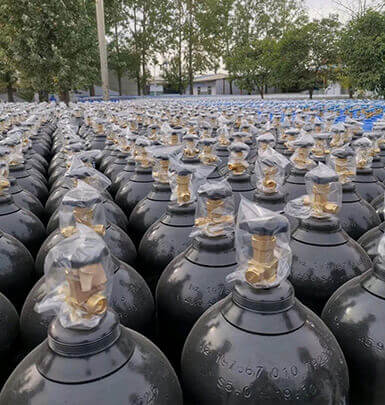Introduction: The Industrial Importance of Dry Ice

Dry ice plays a crucial role in the food industry, especially for preserving perishable goods during transport. Shipping frozen or fresh food products such as meat, seafood, and dairy requires maintaining low temperatures over long distances. Ice provides consistent cold temperatures without the mess of melted water, keeping products fresh.
For instance, seafood companies rely heavily on ice to transport fish and shellfish internationally. Ice helps preserve the freshness and quality of food during transit, ensuring consumers receive high-quality products.
1. Food Preservation and Transportation

Dry ice plays a crucial role in the food industry, especially for preserving perishable goods during transport. Shipping frozen or fresh food products such as meat, seafood, and dairy requires maintaining low temperatures over long distances. Ice provides consistent cold temperatures without the mess of melted water, keeping products fresh.
For instance, seafood companies rely heavily on ice to transport fish and shellfish internationally. Ice helps preserve the freshness and quality of food during transit, ensuring consumers receive high-quality products.
2. Cold Chain Logistics in Healthcare

In healthcare, the transport and storage of medical supplies like vaccines, blood samples, and organs require stringent temperature control. Ice is indispensable for maintaining the cold chain in these scenarios. Pharmaceutical companies use dry ice to store vaccines and sensitive medicines at extremely low temperatures, ensuring they remain effective.
Dry ice also proves essential in organ transportation, where maintaining optimal conditions is critical. When hospitals and research labs move biological samples or organs, ice provides the cold environment necessary to keep them viable.
3. Industrial Cleaning with Dry Ice Blasting

Dry ice blasting has become a revolutionary cleaning method in many industrial sectors. It involves shooting small pellets of ice at high pressure onto dirty surfaces, removing grime, oil, and other contaminants without causing damage. Since dry ice sublimates instantly, it leaves no residue behind, making it ideal for sensitive equipment cleaning.
Industries such as automotive manufacturing, electronics, and food processing plants use ice blasting to maintain clean environments. This method is eco-friendly, non-abrasive, and highly effective at removing difficult residues like grease and grime.
4. Production and Manufacturing Processes

In production facilities, ice has various uses, especially where temperature control or surface preparation is essential. For example, dry ice blasting helps in cleaning molds and machinery in plastics and rubber manufacturing. It removes residues and extends the life of production equipment.
Additionally, ice is employed to shrink-fit components in the manufacturing of heavy machinery. Cooling parts using dry ice allows them to contract for precise assembly. Once they return to room temperature, these components form strong mechanical bonds.
5. Special Effects in the Entertainment Industry
The entertainment industry uses ice extensively to create atmospheric effects like fog and smoke. When dry ice meets warm water, it produces dense, white fog, which is widely used in theaters, concerts, and films to create eerie, mysterious atmospheres.
Movie productions and stage performances rely on this natural effect, avoiding the need for artificial fog machines. It’s an effective and safe way to enhance visual storytelling without harmful chemicals or environmental damage.
6. Pest Control in Agriculture

In agriculture, ice has found its way into pest control applications. Farmers use ice to eliminate pests like insects in grain silos and storage containers. Carbon dioxide from the sublimating dry ice displaces oxygen, suffocating the pests without the use of harmful pesticides.
This eco-friendly method helps preserve crops and ensures that grain supplies remain uncontaminated. It’s a preferred solution in organic farming, where chemical use is limited, and maintaining crop integrity is essential.
7. Cryogenic Grinding in Food and Pharmaceutical Industries
Cryogenic grinding is an industrial process used to grind materials at low temperatures. Dry ice serves as the cooling agent in this process, freezing the material to make it brittle. This allows for easier grinding of items like spices, herbs, and certain pharmaceutical compounds, improving efficiency.
Industries use cryogenic grinding for products that are too soft or heat-sensitive to be ground at ambient temperatures. Using ice ensures that the materials retain their properties during processing, which is crucial in both food and pharmaceutical industries.
8. Dry Ice in Construction for Concrete Cooling

During large-scale construction projects, particularly in hot climates, maintaining the right temperature in concrete is vital. Dry ice is often added to concrete mixes to control the temperature and prevent cracking during the curing process.
When pouring concrete in high temperatures, ice helps cool the mixture, ensuring it sets evenly and maintains structural integrity. This technique is widely used in the construction of highways, bridges, and large buildings, where temperature control can significantly impact the quality of the final product.
9. Shipping and E-commerce Packaging

As e-commerce continues to grow, so does the demand for reliable packaging solutions, especially for temperature-sensitive goods. Companies selling perishable products like food or pharmaceuticals use dry ice in their packaging to keep items fresh during transit.
Ice ensures that customers receive frozen goods without any deterioration in quality. With e-commerce businesses focusing on customer satisfaction and product integrity, dry ice plays an important role in maintaining supply chain efficiency.
10. Emergency Cooling Solutions
Dry ice is widely used as an emergency cooling solution during power outages or equipment failures. Whether it’s in hospitals, data centers, or cold storage facilities, dry ice helps maintain low temperatures during short-term emergencies when traditional cooling methods are unavailable.
For businesses that rely on refrigeration, such as food service providers, ice can be a lifesaver, preventing spoilage of goods and saving valuable inventory.
Conclusion: Dry Ice as an Industrial Powerhouse

Dry ice has a broad range of industrial applications that extend far beyond simple cooling. From food transportation and healthcare logistics to industrial cleaning and special effects, its usefulness in controlling temperatures and handling sensitive materials makes it an indispensable tool.
At Hindair, we provide top-tier dry ice solutions tailored to meet the specific needs of various industries. Whether you’re looking for ice blocks, pellets, or custom-sized slices, we have you covered. Trust Hindair to deliver high-quality dry ice that meets your operational needs and keeps your business running smoothly.
For more information on purchasing dry ice for your industrial needs, visit Hindair’s website and explore the variety of options available.












